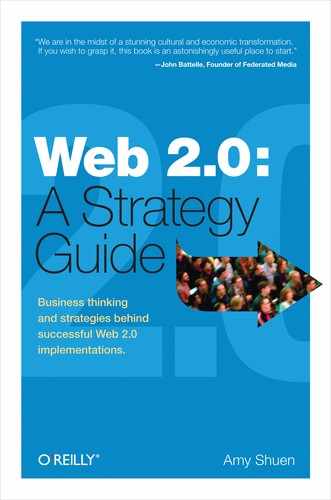Foreword
In 2004, when O’Reilly Media, John Battelle, and CMP announced the Web 2.0 Conference (later renamed the Web 2.0 Summit), we had no idea that we’d be naming the next big thing in the computer industry. The original premise of the Web 2.0 name was much simpler than that. In 2001, after the dot-com bust, everyone had written off the Web. But at O’Reilly, we believed deeply that the Web was here to stay, and that it was indeed the next platform. We also noted that all of the companies that had survived the dot-com bust—and all of the exciting new startups that were gaining remarkable traction—had something in common: they understood and exploited the opportunities of the network as a platform, rather than trying to graft old business models onto that platform. We saw Web 2.0 not as a new version of the Web, but rather, as the realization of the Web’s potential, its second coming, so to speak. We launched a conference to tell that story, and to reignite excitement in the industry about the transformative power of this technology.
The term Web 2.0 caught everyone’s imagination, coming at just the right time to capitalize on the rise of Google, mashups, and Ajax. But to us, the term meant far more than just advertising-based business models or new types of web applications. In 2005, I wrote a paper, What Is Web 2.0?, to formalize our ideas about this new platform. I argued that Web 2.0 is ultimately about harnessing network effects and the collective intelligence of users to build applications that literally get better the more people use them. What’s more, I argued that just as the personal computer rewrote the rules of the computer industry in ways that blindsided the giants of that era, so too, would the Internet upend all the power structures and business models of today’s industry. Only companies that understood and adapted to the new rules of business would survive and prosper.
Since then, the name Web 2.0 has been widely accepted, and the concepts in that paper, and its predecessor, The Open Source Paradigm Shift have been the basis of many new business plans and development strategies. But with popular acceptance and enthusiasm has come a great deal of misinformation, as marketers have tried to wrap products in the mantle of Web 2.0 whether or not they fit.
It is for this reason that I’m excited to see the publication of Amy Shuen’s Web 2.0: A Strategy Guide. It’s the first book that really does justice to my ideas, explaining in plain language the business implications of the Web as a platform. Amy works through a series of practical case studies of Web 2.0 success stories to explain how the underlying principles have been applied to drive each company’s growth and profitability.
There’s still a lot to learn. The Web 2.0 revolution continues, and every day, entrepreneurs are finding new ways to apply the principles of Web 2.0. I expect more surprises and new success stories. But for now, this book is the best starting point for any company that wants to understand and apply Internet-era business strategy.
—Tim O’Reilly
Sebastopol, CA
March 2008
